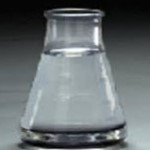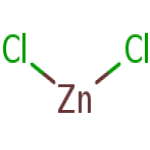Zinc Chloride Anhydrous Battery Grade Powder SDS of Suppliers Exporters, Manufacturers
Zinc Chloride
CAS Number: 7646-85-7 Anhydrous Battery Grade Powder Solution USP BP Ph Eur EP IP Reagent GradeSuppliers Exporters, Manufacturers


Please visit Main Page of Zinc Chloride Anhydrous Battery Grade Powder Solution USP BP Ph Eur EP IP Reagent Grade Manufacturers.
Zinc Chloride Anhydrous SDS, Safety Data Sheet
MSDS Sheet 17-May-22
1. Product Identification
Product Name & Other Names: Zinc Chloride Anhydrous or Zinc Dichloride or Zinc Butter.
CAS No.: 7646-85-7
EINECS EC Number: 231-592-0
Relevant uses and uses advised against (if any): Industrial Manufacturing.
Suppliers: As per letterhead.
2. Hazards Identification
GHS, Globally Harmonized System Classification in accordance with 29 CFR 1910
Classification according to Regulation (EC) No 1272/2008
Acute Toxicity Oral Category 4, H302
Skin corrosion/irritation Category 1A, B, C, H314
Hazardous to the aquatic environment, long-term hazard Category 2, H411
Labeling according to GHS & Regulation (EC) No 1272/2008
GHS Label Elements  Aquatic Toxicity |
GHS Label Elements |
Signal Words: Danger
Hazard statements:
H302 Harmful if swallowed.
H314 Causes severe skin burns and eye damage.
H411 Toxic to aquatic life with long lasting effects.
Precautionary statements:
P262 Do not get in eyes, on skin, or on clothing.
P264 Wash skin thoroughly after handling.
P270 Do not eat, drink or smoke when using this product.
P273 Avoid release to the environment.
P280 Wear protective gloves/protective clothing/eye protection/face protection.
P330 Rinse mouth.
P301+P312 IF SWALLOWED: Call a POISON CENTER or doctor/physician if you feel unwell.
P302+P352 IF ON SKIN: Wash with soap and water.
P305+P351+P338 IF IN EYES: Rinse cautiously with water for several minutes. Remove contact lenses, if present and easy to do. Continue rinsing.
P332+P313 If skin irritation occurs: Get medical advice/attention.
P337+P313 If eye irritation persists: Get medical advice/ attention.
P360 Rinse immediately contaminated clothing and skin with plenty of water before removing clothes.
3. Composition/Information on Ingredients
Product Name & Other Names: Zinc Chloride Anhydrous or Zinc Dichloride or Zinc Butter.
CAS No.: 7646-85-7
EC Number: 231-592-0
4. First Aid Measures
Always seek medical attention after first aid measures are provided.
Inhalation: Remove to fresh air. If not breathing, give artificial respiration. If breathing is difficult, give oxygen. Get medical attention immediately.
Ingestion: If swallowed, DO NOT INDUCE VOMITING. Give large quantities of water. Never give anything by mouth to an unconscious person. Get medical attention immediately.
Skin Contact: Immediately flush skin with plenty of water for at least 15 minutes while removing contaminated clothing and shoes. Get medical attention immediately. Wash clothing before reuse. Thoroughly clean shoes before reuse.
Eye Contact: Immediately flush eyes with plenty of water for at least 15 minutes, lifting lower and upper eyelids occasionally. Get medical attention immediately.
5. Fire Fighting Measures
Fire: Not considered to be a fire hazard.
Fire Extinguishing Media: Use water spray, alcohol-resistant foam, dry chemical, or carbon dioxide. Use means suitable for extinguishing surrounding fire.
Extinguishing Media Not recommended: None specified.
Special Information: In the event of a fire, wear full protective clothing and NIOSH-approved self-contained breathing apparatus with full face piece operated in the pressure demand or other positive pressure mode. At high temperatures under fire conditions, it may produce toxic or irritating fumes. Fire-extinguishing work is done from the windward and the suitable fire-extinguishing method according to the surrounding situation is used.
6. Accidental Release Measures
Personal precautions, protective equipment, and emergency procedures: Avoid breathing dust/fumes/gas/mist/vapors/spray. Use individual protective equipment (waterproof boots, suitable protective clothing, safety glasses, etc.). Do not approach face the wind.
Environmental precautions: Do not let the product enter drains, soil, or water sources.
Methods and materials used for containment cleanup procedures and Storage: Do not inhale dust, vapors, mist, or gas. Avoid dust formation. Contain spilled material. Cover with an inert, non-combustible absorbent material, (e.g., sand, earth, diatomaceous earth, vermiculite). Use a shovel to put the material into a convenient waste disposal container. Finish cleaning by spreading water on the contaminated surface and allow to evacuate as per law.
7. Handling and Storage
Precautions for safe handling: Apply according to good manufacturing and industrial hygiene practices. Ensure proper ventilation. In case of insufficient ventilation, wear suitable respiratory equipment. Wash thoroughly after handling. Do not drink, eat, or smoke while handling. Avoid contact with skin, eyes, and clothing. Minimize dust generation. Avoid breathing dust/fumes/gas/mist/vapors/spray. Use individual protective equipment (waterproof boots, suitable protective clothing, safety glasses, etc.).
Conditions for safe storage, including any incompatibilities: Store in cool, dry, and ventilated area away from heat sources and protected from sunlight in tightly closed original container. Keep air contact to a minimum. Store protected from heat, sparks and ignition sources and incompatible materials. Do not store with incompatible materials like strong oxidizing agents, cyanides, and sulfides.
8. Exposure Controls/Personal Protection
Airborne Exposure Limits:
OSHA Permissible Exposure Limit (PEL): 1 mg/m3 (TWA) 8H, as fume.
ACGIH Threshold Limit Value (TLV): 1 mg/m3 (TWA); 2 mg/m3 (STEL) for fume
Ventilation System: A system of local and/or general exhaust is recommended to keep employee exposures below the Airborne Exposure Limits.
Personal Respirators (NIOSH Approved): If the exposure limit is exceeded, a full-face piece respirator with dust/mist filter may be worn up to 50 times the exposure limit or the maximum use concentration specified by the appropriate regulatory agency or respirator supplier, whichever is lowest.
Skin Protection: Wear impervious protective clothing, including boots, gloves, lab coat, apron, or coveralls, as appropriate, to prevent skin contact.
Eye Protection: Use chemical safety goggles and/or full-face shield where dusting or splashing of solutions is possible. Maintain eye wash fountain and quick-drench facilities in work area.
Other Control Measures: Maintain good housekeeping in work area. Handle in accordance with good industrial hygiene and safety practice.
9. Physical and Chemical Properties
Appearance: Fine white crystalline powder or granules.
Odor: It is odorless.
Odor threshold: Not applicable.
pH: around 4 Aqueous solution
Relative density: around 2.9
Boiling Point: 732C (1350F).
Melting Point: 290C (554F).
Flash point: No data found.
Auto-ignition temperature: No data found.
Decomposition temperature: No data found.
Upper/lower flammability or explosive limits: No data found.
Vapor pressure: No data found.
Vapor density: No data found.
Evaporation rate: No data found.
Flammability (solid, gas): No data found.
Partition coefficient: n-octanol/water: No data found.
Solubility: Soluble 423 g/l00 g water @ 25C (77F)
Viscosity: No data found.
Molecular Weight: 136.30
Chemical Formula: ZnCl2
10. Stability and Reactivity
Stability: Stable under ordinary conditions of use and storage.
Hazardous Decomposition Products: When heated to decomposition it emits toxic fumes of chlorine and zinc oxide.
Hazardous Polymerization: Will not occur.
Incompatibilities: Cyanides and sulfides, powdered zinc. When mixed with potassium, a weak explosion will occur on impact.
Conditions to Avoid: Incompatibles.
11. Toxicological Information
Oral rat LD50: 350 mg/kg.
Carcinogenicity: No component of this product present at levels greater than or equal to 0.1% is identified as possible or confirmed human carcinogen by IARC, ACGIH, OSHA and NTP.
Teratogenic Effects: No data found.
Mutagenic Effects: No data found.
Developmental Toxicity: No data found.
Reproductive Effects: No data found.
12. Ecological Information
Toxicity to fish: LC50 - Cyprinus carpio (Carp) - 0,4 - 2,2 mg/l - 96,0 h
Toxicity to daphnia and other aquatic invertebrates: EC50 - Daphnia magna (Water flea) - 0,2 mg/l - 48 h
Environmental Toxicity: Very toxic to aquatic organisms; may cause long term adverse effects in the aquatic environment.
Results of PBT and vPvB assessment: This substance/mixture contains no components considered to be either persistent, bioaccumulative and toxic (PBT), or very persistent and very bioaccumulative (vPvB) at levels of 0.1% or higher.
13. Disposal Considerations
Whatever cannot be saved for recovery or recycling should be managed in an appropriate and approved waste disposal facility.
14. Transport Information
DOT USA, TDG Canada & ADR/RID Europe:
Proper Shipping Name: ZINC CHLORIDE, ANHYDROUS
Hazard Class: 8; Packing Group: III
UN/NA: UN2331
IMDG/IMO:
Proper Shipping Name: ZINC CHLORIDE, ANHYDROUS
Hazard Class: 8; Packing Group: III
UN/NA: UN2331
IATA/ICAO:
Proper Shipping Name: ZINC CHLORIDE, ANHYDROUS
Hazard Class: 8; Packing Group: III
UN/NA: UN2331
15. Regulatory Information
USA:
California Proposition 65: Not listed.
SARA 311/312: See section 2.
Section 16 - Additional Information
DISCLAIMER: The information and recommendations set forth herein are presented in good faith and believed correct as of the date hereof. It is compiled from various sources, and it is not necessarily all inclusive nor fully adequate in every circumstance. In addition, these suggestions should not be confused with nor followed in violation of applicable laws, regulations, rules, or insurance requirements applicable. This SDS MSDS sheet is intended only as a guide to the appropriate precautionary handling of the material by a professionally trained person using this product. Individuals receiving the information must exercise their independent judgment in determining its appropriateness for a particular purpose. This shall not constitute a guarantee for any specific product features and shall not establish a legally valid contractual relationship. In no case shall our company be liable to loss or damages by the product user.

Please visit Technical Data Sheet of Zinc Chloride Anhydrous Battery Grade Powder Solution USP BP Ph Eur EP IP Reagent Grade Suppliers.
Zinc Chloride CAS Number 7646-85-7, Zinc Sulfate CAS Number Anhydrous CAS 7733-02-0, Monohydrate CAS 7446-19-7, Hexahydrate CAS 13986-24-8, Heptahydrate CAS Number 7446-20-0 & Basic Zinc Carbonate CAS Number 5263-02-5 and 3486-35-9 Supplier Exporter, Manufacturer:
Annie Chemie P Ltd
Mumbai 4000010, INDIA
With Agents and offices in UAE, USA, Europe.
e-mail: info@anniechemie.com
Copyright and Usual Disclaimer is Applicable.
June 3, 2025
Exporters to USA, Canada, UK, Europe, UAE, Nigeria, Algeria, Turkey, Mexico, Brazil, Chile, Argentina, Australia, Dubai etc.
Perfection is made up of small things and that is a big thing.

